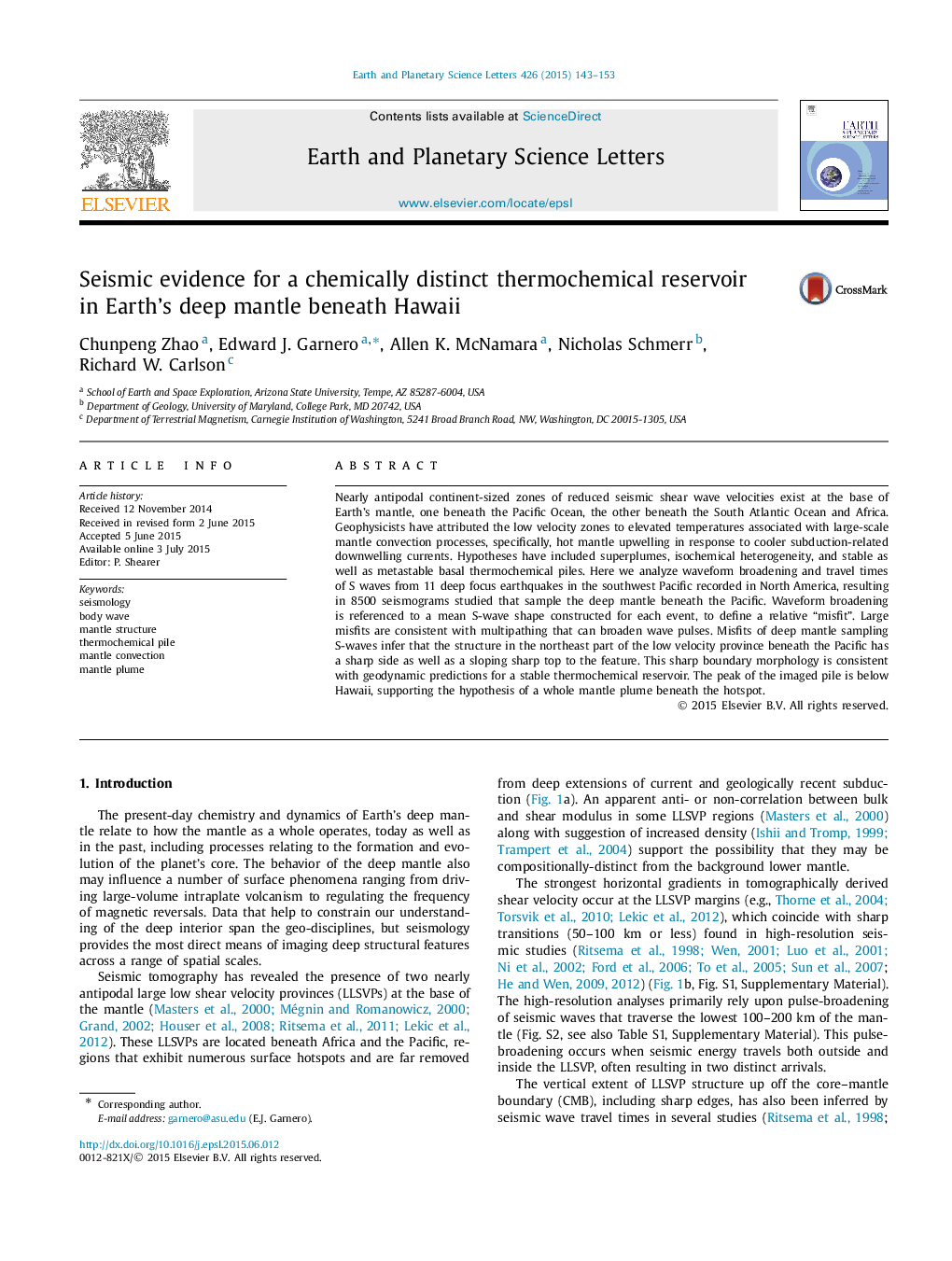| Article ID | Journal | Published Year | Pages | File Type |
|---|---|---|---|---|
| 6428126 | Earth and Planetary Science Letters | 2015 | 11 Pages |
â¢Developed a waveform broadening detection algorithm for deep mantle S waves.â¢S waves that propagate near LLSVP margins and top are broadened.â¢Findings are consistent with a chemically distinct LLSVP.â¢We image a pile-type LLSVP morphology with a peak roughly below Hawaii.
Nearly antipodal continent-sized zones of reduced seismic shear wave velocities exist at the base of Earth's mantle, one beneath the Pacific Ocean, the other beneath the South Atlantic Ocean and Africa. Geophysicists have attributed the low velocity zones to elevated temperatures associated with large-scale mantle convection processes, specifically, hot mantle upwelling in response to cooler subduction-related downwelling currents. Hypotheses have included superplumes, isochemical heterogeneity, and stable as well as metastable basal thermochemical piles. Here we analyze waveform broadening and travel times of S waves from 11 deep focus earthquakes in the southwest Pacific recorded in North America, resulting in 8500 seismograms studied that sample the deep mantle beneath the Pacific. Waveform broadening is referenced to a mean S-wave shape constructed for each event, to define a relative “misfit”. Large misfits are consistent with multipathing that can broaden wave pulses. Misfits of deep mantle sampling S-waves infer that the structure in the northeast part of the low velocity province beneath the Pacific has a sharp side as well as a sloping sharp top to the feature. This sharp boundary morphology is consistent with geodynamic predictions for a stable thermochemical reservoir. The peak of the imaged pile is below Hawaii, supporting the hypothesis of a whole mantle plume beneath the hotspot.
